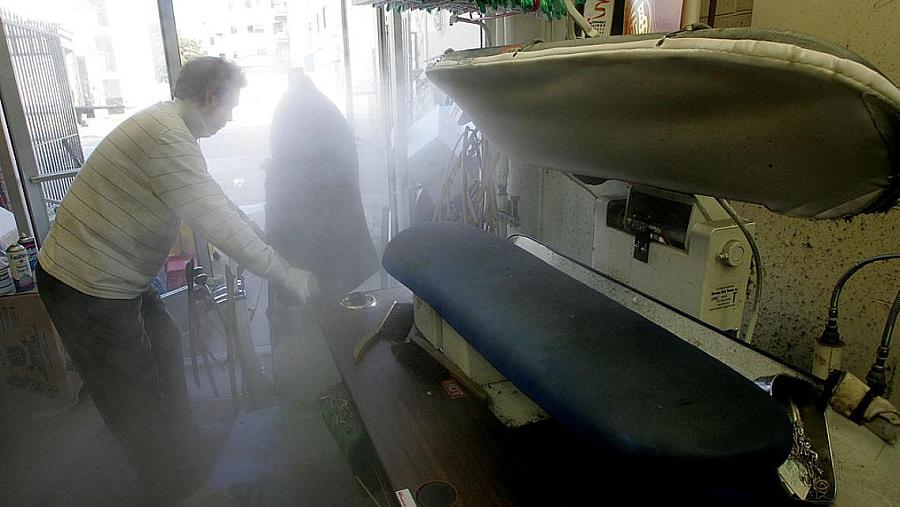Can California clean up decades of toxic pollution left by dry cleaners?

Photo by Justin Sullivan/Getty Images
Dry cleaners are a staple in nearly every community. Many have operated as family-owned businesses for decades, and their loyal customers include sports teams, police departments and the working class.
Since the 1940s, dry cleaners used tetrachloroethylene (PCE) to launder clothes. It was an effective cleaner that got rid of stubborn stains and didn’t damage delicate garments.
But PCE is a carcinogenic chemical, and dry cleaners — initially unknowing of the harm they caused — would regularly dump it down drains after use.
At least 80% of the estimated 7,500 dry cleaners in California used PCE as a cleaning solvent, according to a survey in 2006. Another survey found that at least 75% of dry cleaners in the United States have caused PCE contamination in the environment.
As of Jan. 1, PCE is banned in California.
But the pollution from PCE is pervasive. It can spread through soil into the groundwater below, and it can leach into the air.
At some previously investigated dry cleaners, PCE pollution was found to be minimal and didn’t pose health risks to the general public.
At other sites, however, PCE was found at unhealthy levels in the air of nearby homes and businesses. People there could have been exposed to the carcinogen for decades and never have known it.
Some cities and towns are working with the California Regional Water Quality Control Board in their area to clean up groundwater sources contaminated with PCE. However, efforts to clean up the actual source of such pollution at dry cleaning sites is rare.
The California Department of Toxic Substances Control has begun a statewide examination of dry cleaners and the PCE pollution they may have caused.
In 2023, the agency is expected to contract with private companies to investigate 112 sites in historically underrepresented and vulnerable areas. These sites include areas next to schools and daycares, and in marginalized and disadvantaged communities that often face other pollution impacts.
Those 112 locations account for less than 2% of dry cleaner sites across the state.
Communities deserve to know more about the silent public health threat potentially sitting below their homes and businesses, and whether the state is equipped to clean it up. Reporting on this ongoing environmental disaster will be the focus of my forthcoming project for the 2023 California Health Equity Fellowship.

